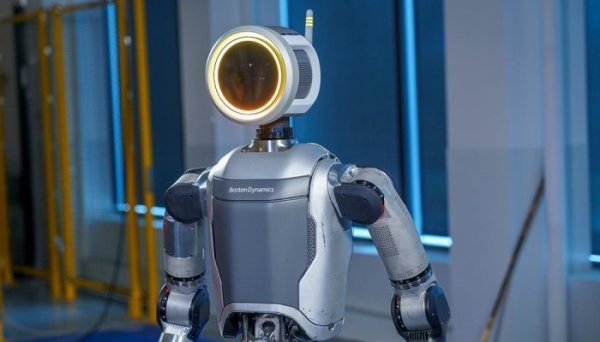
Boston Dynamics has unveiled an updated version of its famous Atlas bipedal robot, in a much more dexterous, agile, fully electric and autonomous form. It will shortly be tested in an automotive plant. The aim is to be able to market it on a large scale in a few years’ time.
Boston Dynamics has drawn on a decade of experimentation to develop a new version of its humanoid robot, now 100% electric and fully operational. The former hydraulic version of Atlas now has been retired to make way for a new, much more dexterous, agile model designed for real-life factory handling and production applications.
A pioneer in humanoid robot research, Boston Dynamics has put all its expertise into creating this new robot. This electric version of Atlas is more robust and, above all, offers a wider range of movements than any previous generation. The idea, for example, is to develop several new gripper variants to meet a range of handling needs for different customers.
Already operational, the updated Atlas is due to make its debut by the end of 2024 in an automotive plant operated by Hyundai, the South Korean automaker and majority shareholder in Boston Dynamics. The aim is to demonstrate how versatile this humanoid robot is, and how it can operate autonomously, in the laboratory, of course, but also in factories, in the service of major industrial groups.
Atlas was originally designed to help people in places usually inaccessible to humans. It soon became capable of moving autonomously, avoiding obstacles, opening doors, using specific tools (a fire hose, for example) and so on. Over the years, Atlas has impressed the world by running, jumping, dancing and even performing backflips!
Boston Dynamics already markets a number of robots, including Spot (a four-legged robot) and Stretch (an articulated arm). The aim is for Atlas to become the first humanoid model to be marketed on a large scale. However, the deployment of autonomous mobile robots will require a number of adjustments, starting with the approval of new safety standards and the acceptance of this type of initiative by employees.
Humanoid robot projects are proliferating, mainly in the USA and China. In addition to Boston Dynamics’ Atlas, these include Tesla’s Optimus robot and Sanctuary AI’s Phoenix. Figure, for its part, has teamed up with OpenAI to integrate ChatGPT into its humanoid robot, enabling it to answer (almost) any question, while also easily handling objects. Meanwhile, China’s Xiaomi is said to be working on a robot capable of interacting with humans by being able to recognize individuals, their expressions and emotions.




